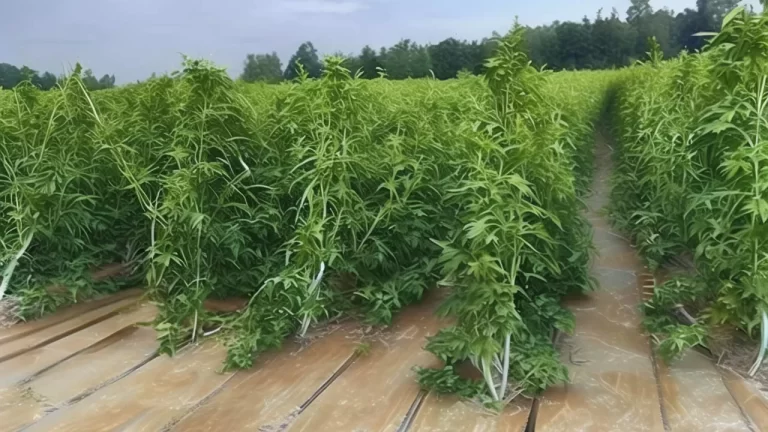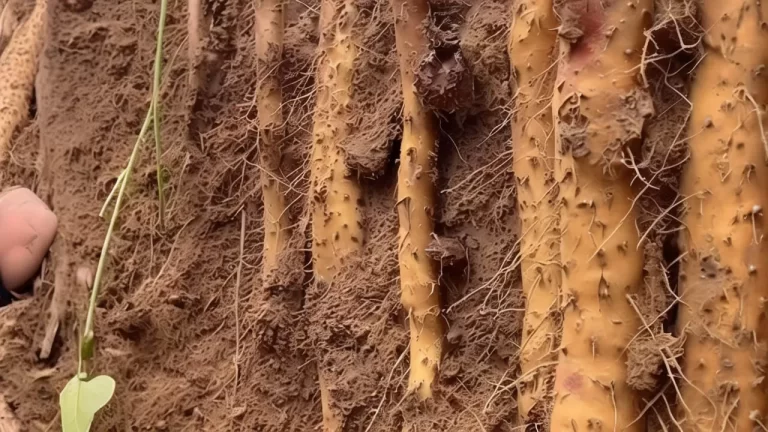Cheats for Yam Harvest
Ultimate Guide to High-Yield Cultivation & Problem Solving
Yam (Dioscorea spp.) is a staple crop in West Africa, particularly in Nigeria (produces 70% of global supply), Ghana, and Côte d’Ivoire. However, farmers face challenges like low yields, nematode infestations, and post-harvest losses. This guide combines scientific research and field-tested solutions to optimize yam production, covering soil prep, fertilization, pest control, and storage techniques.
For commercial growers and fertilizer wholesalers, implementing the right nutrient programs (including amino acid-based liquid fertilizers, slow-release potassium, and bio-organic amendments) can increase yields by 25-40% (Source: International Institute of Tropical Agriculture, IITA).
1. Optimal Growing Conditions for Yam
1.1 Climate & Soil Requirements
- Temperature: 25-30°C (tropical/subtropical)
- Rainfall: 1,500-2,000 mm/year (drought reduces tuber size)
- Soil: Well-drained sandy loam (pH 5.5-6.5)
🔗 Reference: FAO Yam Production Guide
1.2 Land Preparation
- Ridging: Mound soil into ridges (height: 30-40 cm) to improve drainage.
- Organic Matter: Apply 2 tons/ha compost (enhances soil structure).
2. Major Yam Farming Challenges & Solutions
2.1 Low Germination Rates
Problem: Poor seed yam quality (virus-infected).
Solutions:
- Use certified disease-free seed yams (increases germination by 35%).
- Pre-treat with Trichoderma-based biofungicide (reduces rot).
2.2 Nematode & Pest Infestations
Common threats:
- Root-knot nematodes (Meloidogyne spp.)
- Yam beetles (Heteroligus spp.)
Organic control:
- Marigold intercropping (reduces nematodes by 50%).
- Neem cake (250 kg/ha) + microbial nematicides.
🔗 Research: IITA Nematode Management
3. Fertilization Strategies for Maximum Yield
3.1 Nutrient Requirements Per Hectare
| Growth Stage | Key Nutrients | Recommended Fertilizer |
|---|---|---|
| Early Growth | N (80-100 kg/ha) | 30-10-10 + TE water-soluble powder |
| Tuber Bulking | K (150-200 kg/ha) | Slow-release腐植酸钾颗粒 |
| Maturation | P (60-80 kg/ha) | MKP (0-52-34) + amino acid foliar spray |
Yield increase: 30-40% (Source: Ghana Agricultural Journal, 2023).
3.2 Cost-Effectiveness Comparison
| Option | Cost (USD/ha) | Yield Boost |
|---|---|---|
| Traditional NPK Only | $300 | 15% |
| Organic + MKP Combo | $450 | 30% |
| Amino Acid + Slow-K | $550 | 40% |
Best ROI: Amino acid blends (improve nutrient absorption).
4. Post-Harvest & Storage Solutions
4.1 Reducing Storage Losses
- Curing: Dry yams in shade for 48 hours before storage.
- Ventilated Barns: Use bamboo shelves (reduces rot by 60%).
4.2 Value-Added Processing
- Yam Flour Production (extends shelf life to 12+ months).
5. Case Study: Nigeria’s Yam Belt
- Success Factor: Compost + 10-40-10 fertilizer (yield: 25-30 tons/ha vs. 15 tons national avg).
- Key Lesson: Rotate with legumes (e.g., cowpea) to restore nitrogen.
Conclusion
Optimizing yam farming requires targeted fertilization, pest control, and proper storage. For fertilizer wholesalers and commercial farms, integrating amino acid-based liquids and slow-release potassium can maximize ROI.
Explore specialized yam fertilizers at www.fertilizertrelfey.com/shop/.
Need agronomic support?
👉 Chat via the icon in the lower right corner.
👉 Follow us on LinkedIn.


Functional liquid fertilizer
Functional liquid fertilizer penetrates directly through the cell membrane and quickly
Contains chelated trace elements (such as iron, zinc, boron)
Add seaweed polysaccharide/humic acid to improve crop drought resistance
Amino acid liquid fertilizer promotes 45% increase in flower bud differentiation rate%
Sugar alcohol carrier technology accelerates calcium and boron transportation to prevent blueberry deficiency
